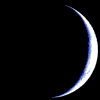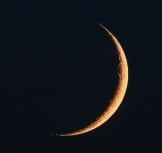JARDINER AVEC LA LUNE – AOÛT 2022

Voici votre calendrier lunaire août 2022 pour le jardin.
Ce calendrier est établi à partir du calendrier biodynamique (d’après les travaux de Maria Thun).
Vous y trouverez mes recommandations pour votre potager naturel pour chaque jour de ce mois de ce mois d’août 2022.
JARDINER AVEC LA LUNE – NOTIONS DE BASE
Jardiner avec la Lune est à la mode…
Se fier à la Lune pour jardiner est pour les uns une croyance d’un autre âge, pour d’autres une évidence reposant sur des observations concrètes…
A chacun de faire selon ses convictions et croyances.
Certains travaux, notamment réalisés par des biodynamistes, tendent à montrer que la Lune, mais plus largement les astres, auraient une certaine influence sur les plantes.
Les anciens suivaient scrupuleusement les phases lunaires…
Pour les biodynamistes, c’est plutôt le cycle lunaire qui serait important à prendre en considération.
J’ai personnellement observé qu’il valait mieux éviter les nœuds lunaires pour semer ou planter…
Il est également facile de constater qu’un semis effectué quelques jours avant la pleine lune (donc en phase lunaire croissante) lèvera beaucoup plus vite qu’un semis effectué en phase décroissante…
Pour le reste, je pense que ces notions ne sont que des indications destinées à tirer le meilleur de son potager. A vous de faire selon vos observations et croyances…
Mais surtout, n’oubliez pas que le bon sens doit prévaloir sur la lune… Par exemple, s’il doit pleuvoir abondamment le lendemain alors que l’on a prévu un semis, il peut être préférable de semer le jour même.
Phases lunaires (environ 29 jours 1/2 )
Les anciens tenaient compte des phases lunaires pour semer ou planter.

- La Lune est croissante de la Nouvelle Lune à la Pleine Lune. Cette période est propice au travail de la terre, aux traitements (à base de plantes bien sûr !), aux repiquages, aux plantations et aux semis de légumes fruits. Les légumes récoltés en lune croissante se conservent mieux.
- Elle est décroissante de la Pleine Lune à la Nouvelle Lune. Cette période est propice pour semer ce qui ne doit pas monter à graines (salades, épinards, oignons). C’est aussi la période idéale pour travailler la terre, effectuer les récoltes (saveur accrue) ou encore tailler les arbres et arbustes dont on veut limiter la croissance .
Cycle lunaire (environ 26 jours)
Les travaux des biodynamistes montrent à priori une influence plus importante des cycles lunaires sur les plantes.
Le cycle lunaire décrit la trajectoire de la Lune dans le ciel :
- Elle est dite ascendante* (ou montante) lorsque que sa trajectoire est plus haute d’un jour à l’autre. La sève monte alors dans la plante. Cette période est propice aux semis, à la plantation des bulbes, aux greffages ou encore à la récolte des fruits et légumes destinés à la consommation en frais.
- A l’inverse, elle est dite descendante* lorsque sa trajectoire est plus basse d’un jour à l’autre. La sève descend dans les racines. C’est alors le moment de planter, repiquer, bouturer, marcotter, tailler, travailler la terre, et y apporter des matières organiques.
Jours particuliers

- Évitez de semer les jours de nouvelles lunes.
- Si la Lune est en apogée, évitez de semer.
- Si la Lune est en périgée ( surtout après la pleine Lune ), c’est une situation à risque pour les plantes sensibles aux maladies cryptogamiques. Cette activité lunaire renforcée peut développer de telles maladies. Il convient donc en prévention d’effectuer des pulvérisations à base de plantes ( par exemple décoction de prêle sur le sol pour les tomates en prévention du mildiou ). C’est aussi un bon jour de semis, sauf pour les plantes sensibles aux maladies cryptogamiques.
- Si il y a une journée défavorable (nœud lunaire ) évitez de jardiner.
La Lune et les signes du Zodiaque
La lune tourne autour de la terre en 27 jours, elle passe donc devant chacune les douze constellations du zodiaque.
Ainsi, aux différents éléments sont associés 3 signes du zodiaque :
- Aux constellations de terre, (Taureau, Vierge et Capricorne) on associe les légumes racines (ail, betterave, carotte, navet, échalotte, oignon, radis, pomme de terre) ainsi que les fleurs à bulbes.
- Aux constellations d’air (Gémaux, Balance et Verseau) correspondent les légumes fleurs ainsi que les fleurs annuelles et vivaces, les arbres et arbustes à fleurs ou encore les plantes aromatiques et médicinales dont on récolte les fleurs.
- Aux constellations d’eau (Poissons, Cancer et Scorpion) correspondent les légumes feuilles (artichaut, céleri, chicorée, choux, cresson, épinard, laitue, poireau) et les plantes aromatiques et médicinales dont on récolte le feuillage.
- Aux constellations de feu (Bélier, Lion et Sagittaire) on associe les plantes-fruits (aubergine, céréales, concombre, courge, fève, fraise, framboise, haricot, melon, piment, pois, citrouille, tomates) et les arbres fruitiers.
COMMENT UTILISER LE CALENDRIER LUNAIRE JARDIN ?
Pour ce qui me concerne, j’utilise le calendrier lunaire avant tout comme outil de planification de mes cultures.
J’essaye de respecter au mieux les périodes de plantations et de semis, ainsi que de jours fruits, racines, feuilles ou fleurs… si la météo, l’avancement de mes travaux (si la terre n’est pas prête pour un semis, mieux vaut attendre qu’elle le soit que de semer dans de mauvaises conditions !) ou encore mes disponibilités (matérielles mais aussi psychologiques… on réussit mieux ses semis lorsque l’on est dans une bonne énergie pour cela) le permettent.
Bref, je ne considère pas ce calendrier lunaire jardin comme une règle absolue mais plutôt comme un simple guide.
Mon seul « interdit », ce sont les jours de nœuds lunaires ou planétaires…



































